Study: Smaller news websites depend more on social media for traffic than larger sites
In any local market, the dozens or hundreds of available news websites make up a news ecosystem.
In any real-life nature ecosystem — think of the food chain diagram you learned in 5th grade — the many species develop their own roles. They are all different, but also all interdependent.
The same is true for news websites in an ecosystem.
New research published today looks in-depth at those relationships in one sample market (Chicago) by analyzing and mapping the connections between more than 300 websites that make up the core of the ecosystem.
The study, conducted by Northwestern professor Rich Gordon and Syndio Social CEO Zachary Johnson and paid for by The Chicago Community Trust, over a two-week period examined all the links between 301 news websites and obtained analytics data about referral sources for about 100 of those sites.
Below are some of the interesting takeaways.
Social media matters, especially for small sites
Overall, the websites in the Chicago ecosystem got more than 23 percent of all their referrals from social media. Facebook drove 18.9 percent; Twitter 4.4 percent.
But social media’s share of referrals for any specific site varied greatly depending on its size. Small websites got more than half their referrals from social media, while the large sites got only about 19 percent from social.
That was one of the most surprising findings, but there are a lot more in the study.
Particularly interesting is the researchers’ ability to map the link connections between the hundreds of websites and analyze the role each one plays in the ecosystem.
The graphic below, for instance, shows the tendency of certain groups of news websites to form clusters that are much more likely to link among themselves than to any other site. Each circle represents a website, each line represents links between them.
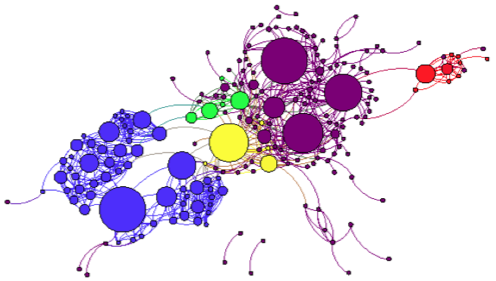
- Color key: Red: Newcity sites; Green: Sun-Times sites; Yellow: Tribune sites; Blue: Patch sites; Purple: Other sites. The largest “other” sites are, clockwise from the top: Huffington Post, Gapers Block, Windy Citizen, The Expired Meter and Progress Illinois.
Ninety-two percent of Patch links went to other Patch sites. The same internal-linking bias was seen with 90 percent of Newcity site links, 82 percent of Tribune Co., site links and 80 percent of Sun-Times links.
“In the diagram,” the study says, “it is easy to see that groups of sites operated by New City, the Sun‐Times, Tribune Co., and Patch link heavily amongst themselves. There is even some clustering within these groups, such as with Patch, where it is split into two clusters for the northern suburbs and the western suburbs.”
“Authorities” vs. “Hubs”
Legacy sites like The Chicago Tribune and independent Web startups likeGapers Block play different roles, but both depend on the larger ecosystem.
The study used its data to map these relative roles. One role, for instance, isthe authorities — the websites with the most inbound links from other websites. Most are the legacy media brands.
Then there are the hubs — the sites “that guide users to relevant information on other sites” through their outbound links. Here we see a different set of leading websites; the circle size represents the volume of outbound links.
Another class of websites serve as the main connections between the different clusters of websites and audiences. The study labels these the switchboards.
“Switchboards,” the study explains, “connect nodes that would otherwise not be connected at all — or, if removed from the network, would require users to make many more clicks to travel from one site to another site.”
The chart below shows how prominent switchboards tie the ecosystem together.
Small sites depend on the ecosystem
Overall, the websites in the Chicago news ecosystem received 8.5 percent of their total visits via referrals from other sites in the ecosystem. But, much like with social media, the ecosystem is much more important to the smaller members.
Large websites like the Chicago Tribune and the Sun-Times got just 2.2 percent of their visits from ecosystem referrals. Small and medium sites got 25 percent (11 times more) of their visits from other members.
In the big picture, the study shows connection and interdependence among the hundreds of websites in a local market. And it recommends that all publishers should link more often to other sites in their ecosystem.
“Sites that link out a lot also can get links back,” the study says. “At a national level, huffingtonpost.com has demonstrated this — and Huffington Post Chicago has quickly become one of the most influential sites in the local market.” The site launched in 2008.
But clearly, these results show the power of networks is much more essential to the growth of the smaller websites than the larger ones. The big legacy brands may have other media products and may draw some national audience from outside the market.
For the local sites with a niche focus, it it extremely important they connect with the audience on social media and connect with their peer sites through links.
You an explore the data through an online dashboard the researchers created.
Related: Ranking Chicago’s online news sites
Poynter

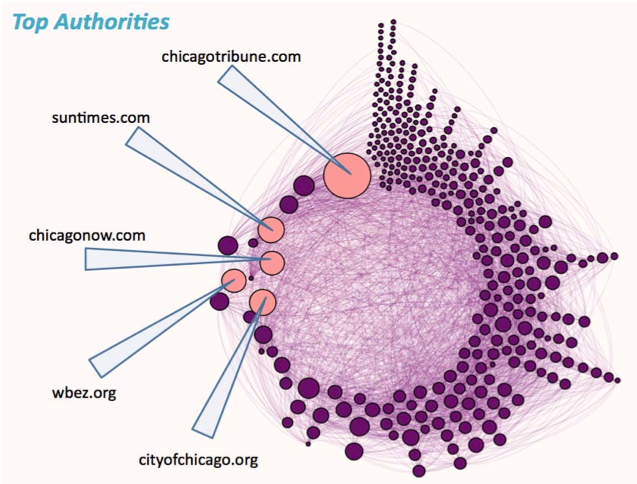
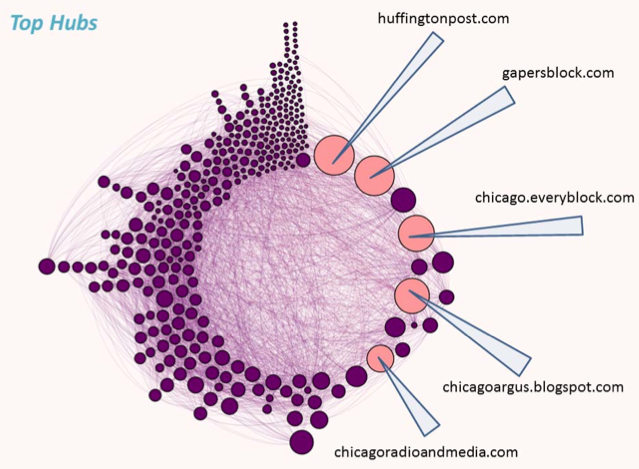
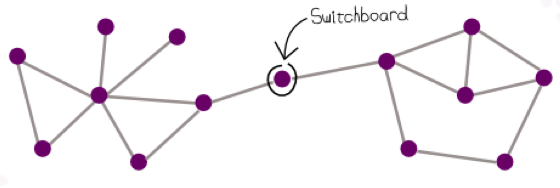
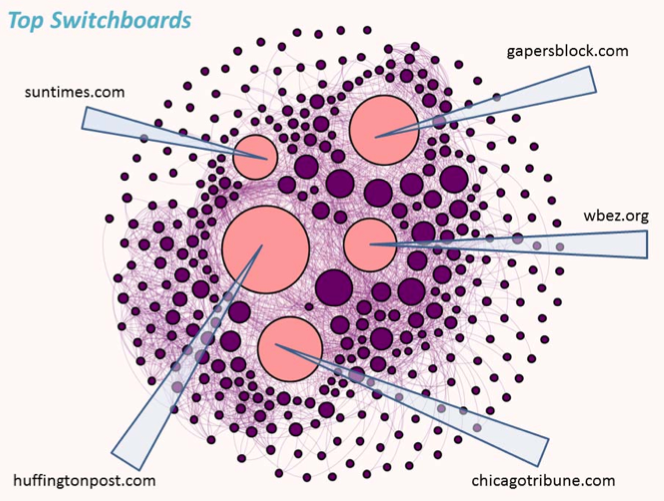
No hay comentarios:
Publicar un comentario